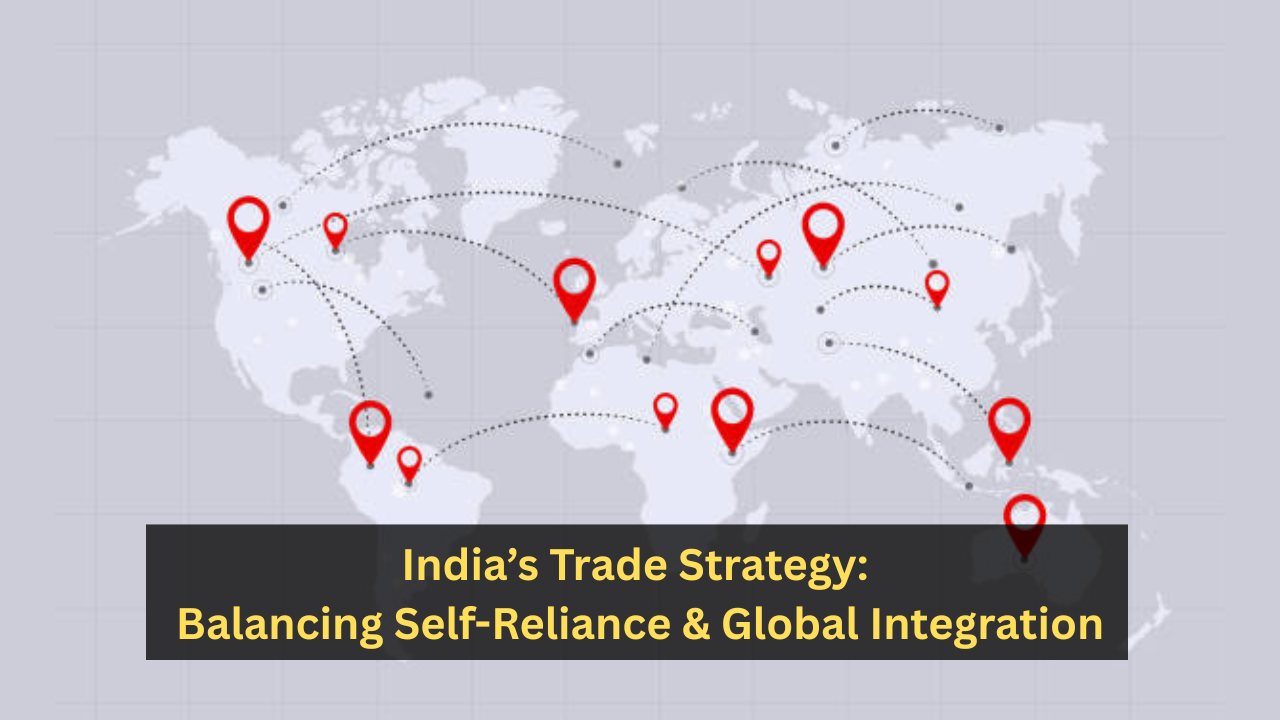India’s Trade Strategy 2025: Self-Reliance, Resilient Supply Chains, and Global Integration

Mumbai, October 1, 2025 – India is recalibrating its trade strategy to emphasize self-reliance and resilient supply chains, a shift shaped by rising global protectionism, geopolitical tensions, and repeated supply chain disruptions. Union Minister of Commerce & Industry, Piyush Goyal, has underscored the need to guard against the “weaponization of trade” while ensuring that India emerges as a trusted hub in the global value chain. This evolving trade vision—anchored in the Atmanirbhar Bharat (self-reliant India) mission—seeks to secure economic autonomy without isolating India from global markets. Instead, the focus is on creating a balanced framework that strengthens domestic capacity while deepening international integration.
Why Self-Reliance Matters
The global economy has faced unprecedented shocks in recent years, from the COVID-19 pandemic and chip shortages to commodity volatility and energy crises. For India, these disruptions exposed vulnerabilities in critical supply chains and overdependence on a few key partners. To address these risks, the strategy rests on three pillars: reducing dependency on single sources for critical goods, enhancing resilience to safeguard supplies during crises, and boosting competitiveness by strengthening domestic manufacturing and infrastructure to support exports and small businesses. Through policies that diversify imports, incentivize local production, and upgrade logistics, India aims to safeguard its economy while remaining an active player in global commerce.
Industries Under Transformation
The impact of this strategy is most visible in industries critical to national security and competitiveness. In pharmaceuticals, India has long been known as the “pharmacy of the world,” supplying affordable generics globally, yet its dependence on China for Active Pharmaceutical Ingredients (APIs) remains a major weakness. Government initiatives such as the Production-Linked Incentive (PLI) scheme are now encouraging domestic API production, ensuring uninterrupted drug supplies and enhancing India’s position in global healthcare.
In electronics and semiconductors, India has historically imported nearly all its needs. By promoting chip fabrication, electronics assembly, and mobile phone production, the government hopes to position India as a new hub for semiconductor manufacturing. Similarly, the automobile sector, particularly electric vehicles, is being reshaped. India currently depends on imported EV batteries, rare earth minerals, and advanced auto components, but localization efforts are underway to build domestic battery production and diversify sourcing of critical minerals. These moves aim to stabilize supply chains and increase India’s competitiveness in the global EV market.
The renewable energy sector faces similar challenges, with solar panels and modules largely imported from China. To counter this, the government is incentivizing local solar panel manufacturing and investing in green hydrogen, aligning with India’s ambitious clean energy targets while reducing import dependence. Traditional industries are also part of the transformation. In textiles and apparel, a sector where India is already a global leader, dependence on imported raw materials exposes it to market fluctuations. Domestic sourcing and sustainable practices are being promoted to maintain export competitiveness.
In agriculture and food processing, global commodity swings create instability. Investments in cold chain logistics and stronger farm-to-fork linkages are expected to secure food supplies and expand India’s share in global agri-exports. Meanwhile, technology and digital infrastructure remain central to the new trade strategy. Heavy reliance on foreign hardware raises risks to both data security and sovereignty. To counter this, India is channeling investment into domestic cloud services, AI chip development, and secure data storage, creating a stronger digital backbone for its rapidly expanding tech ecosystem.
The Global Context
At the international level, India’s approach reflects pragmatism: collaborating where beneficial, but insulating where necessary. The “China-plus-one” strategy adopted by multinational firms looking to diversify beyond China provides India with a rare opportunity to emerge as a key node in global supply chains. With its vast domestic market, youthful workforce, and improving business environment, India offers a compelling alternative for companies seeking to reduce exposure to concentrated supply chains. This shift is not merely about replacing imports with domestic products but about positioning India as a reliable partner for countries navigating an increasingly fragmented global trade landscape.
Challenges and Opportunities
Despite the opportunities, India must navigate hurdles. Infrastructure gaps, particularly in logistics and manufacturing ecosystems, demand sustained investment. India also faces stiff competition from countries like Vietnam and Indonesia, which are aggressively courting global supply chains. Moreover, the success of advanced manufacturing and digital sectors depends heavily on developing a highly skilled workforce, an area that requires immediate focus. Yet, India’s demographic advantage and strategic location provide strong foundations to overcome these hurdles.
Conclusion
India’s trade strategy, grounded in self-reliance and resilience, is a forward-looking response to global uncertainties. By reinforcing domestic capabilities and forging robust global partnerships, India seeks not just to shield its economy from external shocks but also to redefine its role in the evolving world economy. As Piyush Goyal emphasized, resilience is about ensuring that industries, MSMEs, and citizens can thrive regardless of global headwinds. With consistent execution, Atmanirbhar Bharat has the potential to transform India into a cornerstone of global trade and supply chain networks in the 21st century.



 113
113

 The BharatBiz
The BharatBiz
 16
16

